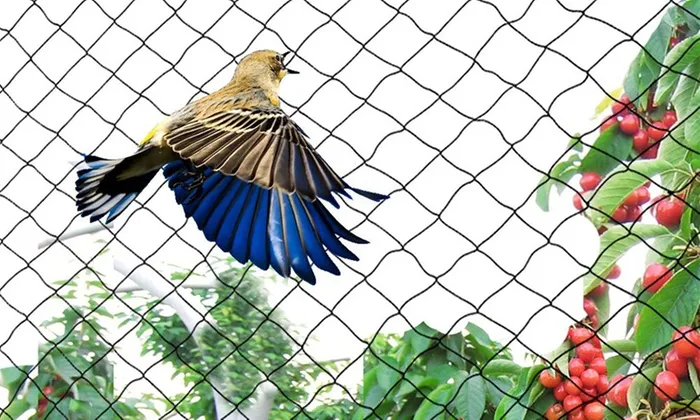© 2020 Hefei Better Technology Co., Ltd. All rights reserved.Site Map Designed by iwonder.cn
Tel
086-19155119097

Birds are an integral part of our natural environment, providing beauty and biodiversity to our world. However, when it comes to agriculture and building structures, birds can sometimes become a nuisance. Birds can cause significant damage to crops, gardens, and structures, and can even pose a health risk in certain situations. Fortunately, there are several options available to protect against bird damage, one of which is anti-bird netting.
What is Anti-Bird Netting?
Anti-bird netting, also known as bird netting or bird protection net, is a durable and cost-effective solution designed to keep birds away from crops, gardens, and structures. Anti-bird netting is typically made from a lightweight and strong material, such as polyethylene or nylon, and is available in a variety of mesh sizes to suit different bird species and applications.
Anti-bird netting works by creating a physical barrier between birds and the target area. When installed properly, the netting is designed to prevent birds from accessing the area while still allowing air and sunlight to pass through. This means that crops and plants can still receive the necessary nutrients and light they need to grow, while birds are kept at bay.
Benefits of Anti-Bird Netting
There are several benefits to using anti-bird netting as a bird control solution, including:
Effective bird control: Anti-bird netting is a proven and effective way to keep birds away from crops, gardens, and structures.
Cost-effective: Compared to other bird control methods, such as chemical deterrents or bird spikes, anti-bird netting is a cost-effective solution that can save you money in the long run.
Safe for birds: Anti-bird netting is a humane solution that does not harm birds. Instead, it simply creates a barrier that birds cannot penetrate.
Versatile: Anti-bird netting can be used in a variety of applications, including agriculture, horticulture, and building structures.
Easy to install: Anti-bird netting is relatively easy to install, requiring minimal tools and expertise. This means that you can install it yourself or hire a professional to do it for you.
Applications of Anti-Bird Netting
Anti-bird netting can be used in a wide range of applications, including:
Agriculture: Anti-bird netting is commonly used in agriculture to protect crops from birds. It can be used to protect a variety of crops, including fruits, vegetables, and grains.
Horticulture: Anti-bird netting is also used in horticulture to protect plants from birds. It can be used in gardens, nurseries, and greenhouses to protect plants from damage.
Building structures: Anti-bird netting can also be used to protect buildings and structures from birds. This is particularly useful in urban areas where birds may roost on buildings and cause damage or pose a health risk.
Aquaculture: Anti-bird netting can also be used in aquaculture to protect fish farms from birds. It can be used to cover fish ponds or other water bodies to prevent birds from accessing the fish.
Choosing the Right Anti-Bird Netting
When choosing anti-bird netting, there are several factors to consider, including:
Mesh size: The mesh size of the netting should be chosen based on the size of the bird species you are trying to keep away. For smaller birds, a smaller mesh size is recommended, while larger birds require a larger mesh size.
Material: Anti-bird netting is typically made from either polyethylene or nylon. Both materials are strong and durable, but nylon is generally more expensive and has a longer lifespan.